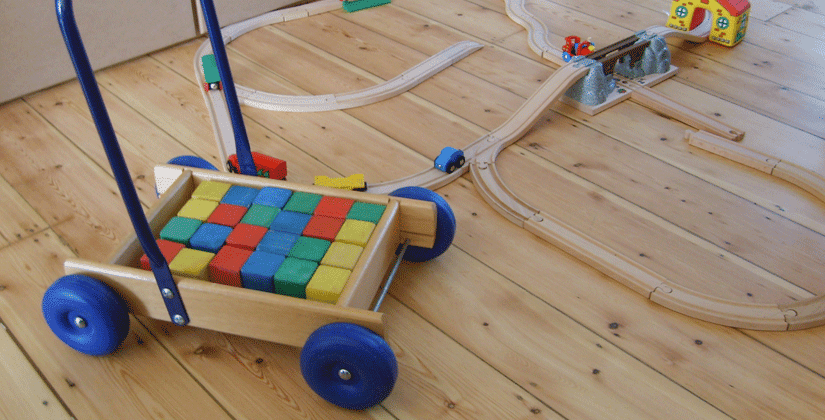Flooring with the children in mind: Your options
- July 22, 2016
- Posted by: webdev
- Category: Uncategorized

Choosing a flooring option is difficult but it is even more so when you take into consideration children-induced wear and tear. Scuffs and spills are some of the concerns you will be worried about, but the comfort and safety of the children should not be neglected in the decision making process. When choosing flooring in such a situation, you are looking at a floor type that is able to withstand the extra abuse whilst keeping everyone healthy and safe. This piece takes a look at the main flooring types and the pros and cons of using them in a home with children.
Tile
Pros- Tiles are moisture resistant and durable, making them a strong option against spills, dents and dings.
Cons- Tiles offer a hard surface that has little to no shock absorption against trips and falls. Depending on the width of the grout lines, there is a risk of the small feet of your children tripping and slipping: even more so when there is a little bit of spill.
Vinyl
Pros- Vinyl flooring is inexpensive and durable. It is equally easy to clean and resistant to damage and moisture.
Cons- In homes with small children, Vinyl is not recommended by health officials as a result of the organic compounds in some of them which can be linked to respiratory illnesses. Vinyl equally has lead and phthalate risks.
Laminate
Pros- Laminate is inexpensive and appealing, especially when you take into consideration the possible damages that come as a result of children occupying a space. Most laminates have the look and feel of real wood, allowing users to replicate the aesthetics for a fraction of the investment needed.
Cons- As soon as laminate gets damaged, there is nothing else that can be done. The only option you have is to replace the damaged section or to continue living with the damage. In some higher end laminates, durability is higher, but it only takes one crack to make it susceptible to moisture damage. The glues in certain types of laminates are however toxic.
Carpet
Pros- Carpet looks and feels nice and does a great job of padding falls, preventing slips and offering insulation.
Cons- Keeping carpets stain free and fresh with heavy foot traffic is a herculean task. Carpets also harbour allergens and if they are exposed to moisture, mold and mildew can quickly grow.
Wooden Flooring
Pros – Wooden flooring is not just durable but beautiful and long lasting. Even though it is not as soft as carpet, wood is a natural shock absorber. It is equally a good insulator and hypo-allergenic. It is easy to clean and when it gets worn, it can be easily cleaned, refinished and stained.
Cons- Installing wooden flooring for the first time requires a higher level of investment. If the wooden flooring is not properly sealed, it is easy for it to get damaged by moisture. This is why regular floor sanding is important to keep the wooden floor in optimal conditions.
From the options above, wood flooring is the best rounded option to go with if you are able to look beyond the initial investment. Already have old wooden flooring and looking to change? Hold off on the decision. Proper floor sanding can restore the floor to its old glory and give your children a safe environment to live and play in.
